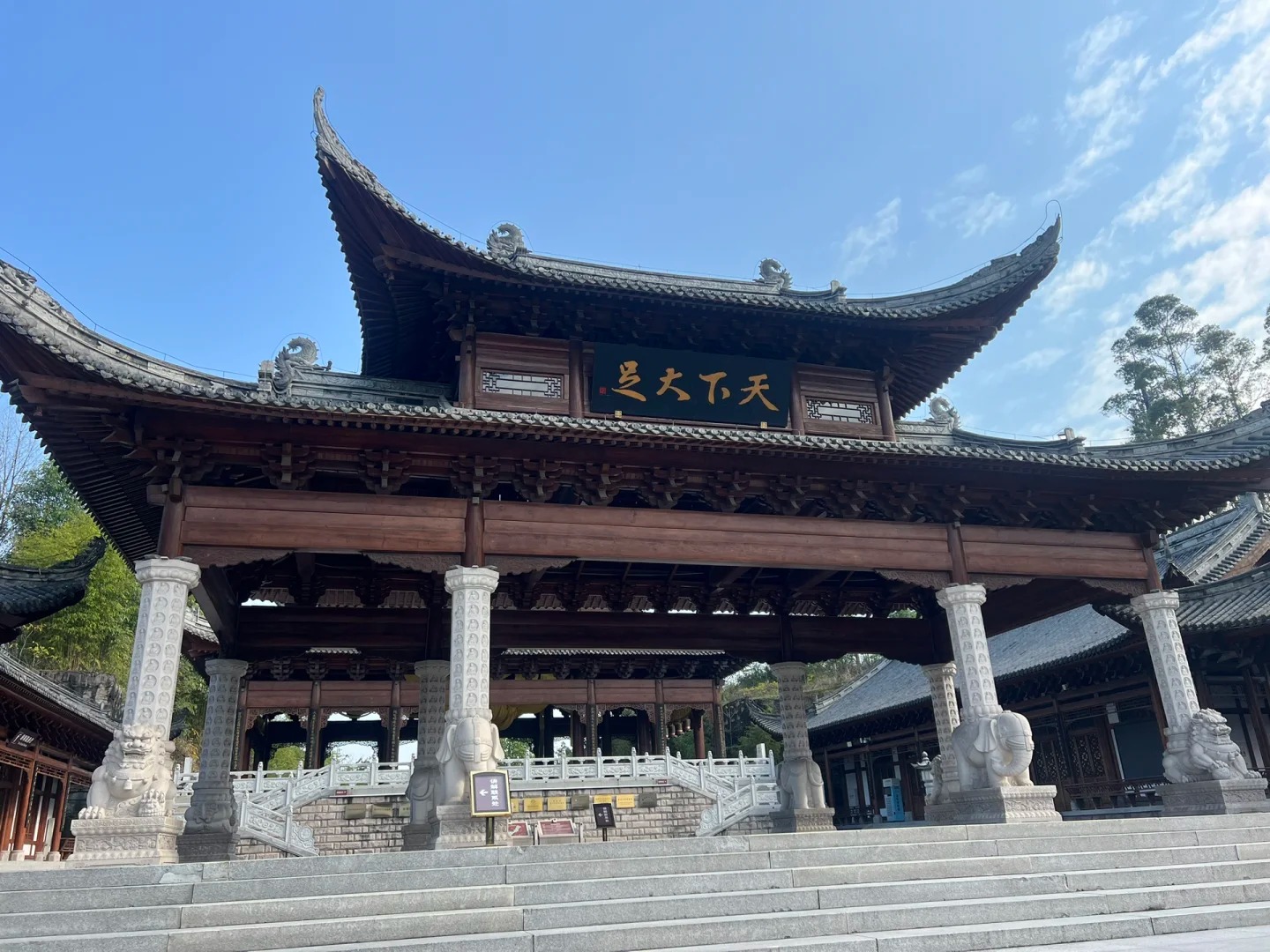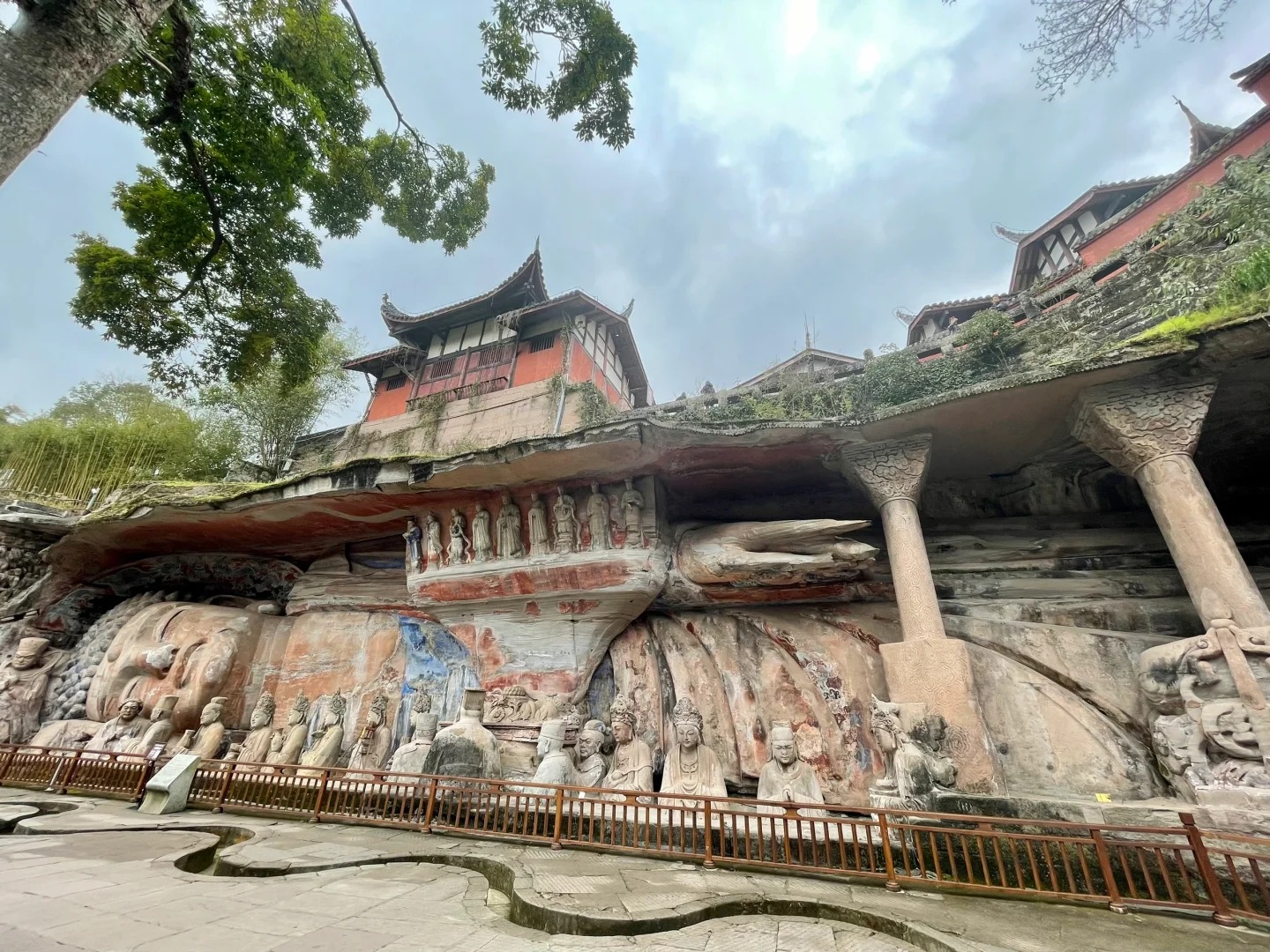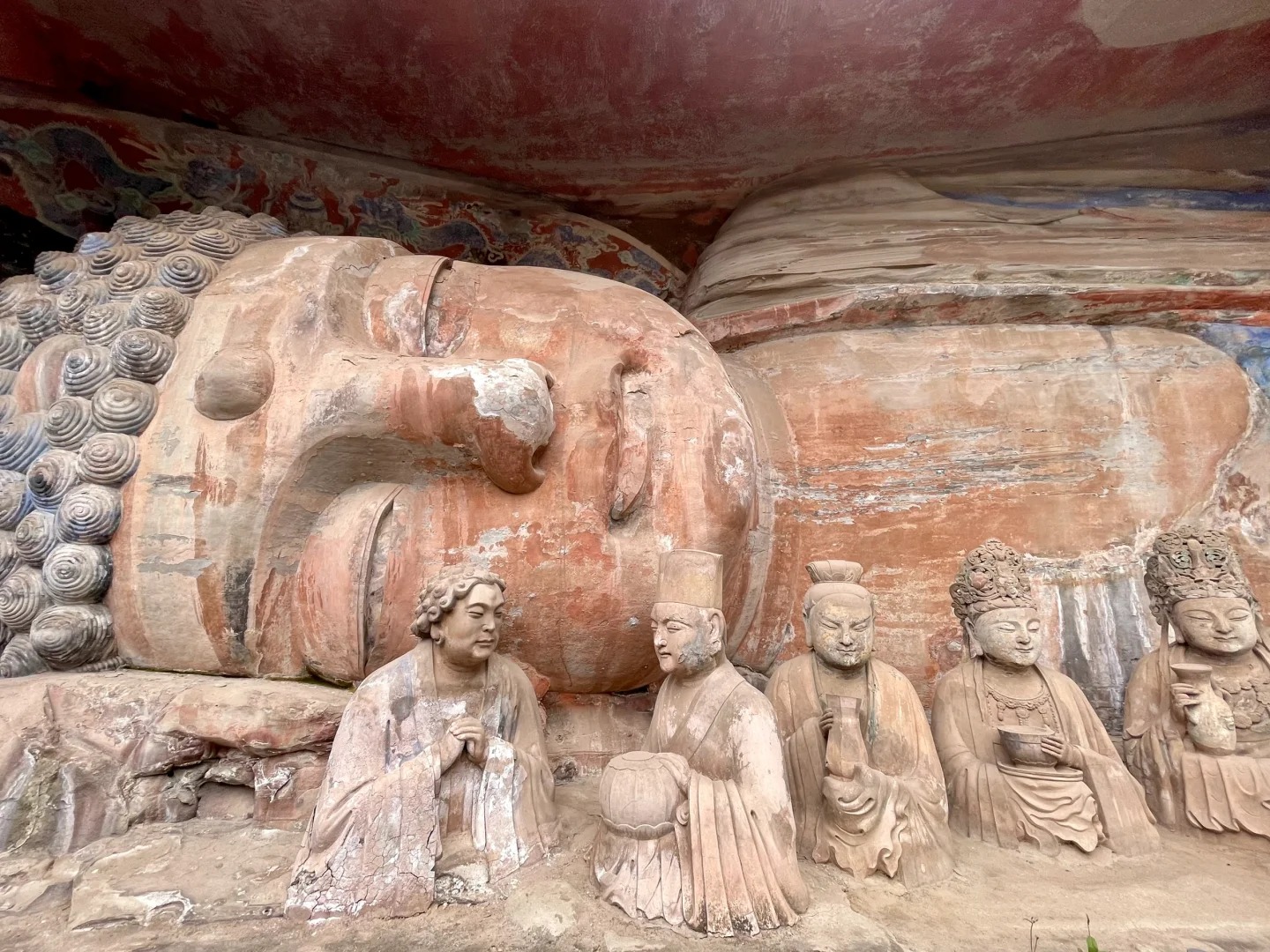Introduction to Dazu Rock Carvings
Nestled in the verdant hills of Chongqing Municipality, the Dazu Rock Carvings (大足石刻, Dàzú Shíkè) stand as a monumental testament to China’s rich artistic and religious heritage. This extraordinary collection of rock carvings, spanning five sites, represents the pinnacle of Chinese rock art.
Recognized as a UNESCO World Heritage Site in 1999, the Dazu Rock Carvings are celebrated for their aesthetic quality, rich diversity of subject matter, and their harmonious integration of Buddhism, Taoism, and Confucianism. This recognition underscores their global significance as a cultural treasure.
The carvings offer a unique window into the spiritual and social life of ancient China, making them an invaluable resource for scholars and a source of wonder for visitors from around the world.

Historical Background
Created between the 9th and 13th centuries, during the Tang and Song dynasties, the Dazu Rock Carvings emerged during a period of great cultural and religious ferment in China. This era saw the rise of Neo-Confucianism and the continued evolution of Chinese Buddhism and Taoism.
Key figures in the creation of the carvings include:
- Zhao Zhifeng: A Buddhist monk who oversaw the creation of many carvings at Baodingshan
- Wei Junjing: A high-ranking official who commissioned works at Beishan
These visionaries, along with countless skilled artisans, left an indelible mark on Chinese art and religious expression.

Artistic and Religious Significance
The Dazu Rock Carvings are renowned for their seamless blend of Buddhist, Confucian, and Taoist iconography. This syncretic approach reflects the complex spiritual landscape of medieval China.
Artistically, the carvings are characterized by:
- Exquisite craftsmanship and attention to detail
- Innovative use of color and three-dimensional modeling
- Dynamic compositions that bring religious stories to life
Themes depicted in the carvings range from Buddhist sutras and Confucian ethical precepts to scenes of daily life in ancient China.

Major Sites within Dazu Rock Carvings
The Dazu Rock Carvings comprise five main sites, each with its own distinctive features:
| Site | Key Features |
|---|---|
| Baodingshan | Extensive narrative scenes, including the Wheel of Life |
| Beishan | Early works with a focus on Pure Land Buddhism |
| Nanshan | Taoist carvings and secular themes |
| Shizhuanshan | Blend of Buddhist, Confucian, and Taoist imagery |
| Shimenshan | Unique cliff-face carvings of Buddhist and Taoist deities |
Baodingshan, the largest and most renowned site, features the iconic “Thousand-Hand Bodhisattva” and the “Reclining Buddha,” both masterpieces of religious sculpture.
Preservation and Research
Preserving the Dazu Rock Carvings presents ongoing challenges:
- Protection from weathering and environmental factors
- Managing tourist impact on the fragile stone surfaces
- Conducting research while minimizing disturbance to the site
Ongoing efforts include:
- Installation of protective shelters over key carvings
- Use of advanced imaging techniques for documentation
- Collaboration between Chinese and international experts
These initiatives aim to ensure that future generations can continue to marvel at these ancient masterpieces.

Visiting Dazu Rock Carvings
The best time to visit is during spring (March to May) or autumn (September to November) when the weather is mild and comfortable for exploring the outdoor sites.
A typical visit includes:
- Starting at the Baodingshan site for its most extensive carvings
- Proceeding to Beishan for earlier works
- Exploring the smaller sites if time permits
Guided tours are highly recommended to fully appreciate the historical and artistic context of the carvings. Photography is allowed in most areas, but flash photography is prohibited to protect the ancient pigments.

Practical Information for Travelers
To reach the Dazu Rock Carvings:
- Take a bus from Chongqing city to Dazu County (about 2 hours)
- From Dazu, local buses or taxis can take you to the various sites
Essential details:
- Entrance Fee: Approximately 170 CNY for Baodingshan and Beishan combined (subject to change)
- Opening Hours: 8:30 AM to 5:30 PM daily
- Accommodations: Several hotels are available in Dazu County
When visiting, remember that these are religious sites. Dress modestly and maintain a respectful demeanor.
The Dazu Rock Carvings offer an unparalleled journey through Chinese religious art and history. As you stand before these ancient stone tableaux, you’ll be transported to a world where spirituality, artistry, and human ingenuity converge. The intricate details of each carving, from the serene face of a meditating Buddha to the dynamic poses of celestial beings, tell stories that have captivated viewers for over a millennium. Whether you’re an art enthusiast, a student of religion, or simply a curious traveler, the Dazu Rock Carvings provide a profound and moving experience. They stand not just as relics of the past, but as a living testament to the enduring power of human creativity and spiritual expression.





